- 1. How to Prepare Your Bike for Winter?
- 1.1. Lower Tire Pressure
- 1.2. Clean Bike After Every Ride
- 1.3. Fenders Are A Must
- 1.4. Disc Brakes Make Life Easier
- 2. What is Winter Mountain Biking?
- 3. What is Winter Fat Tire Biking?
- 4. Tips And Tricks on Winter Biking
- 4.1. Use The Outdoor Gear You Already Have
- 4.2. Keep Your Water From Freezing
- 4.3. Test The Lights For Winter Weather
- 4.4. Keep Your Hands and Feet Warm
- 5. What To Wear For Winter Biking?
- 5.1. Wear Layers
- 5.2. Base Layer
- 5.3. Pants
- 5.4. Mid Layer
- 5.5. Outer Layer
- 5.6. A Hat
- 6. Favorite Biking Spots
- 6.1. Winter Park Colorado
- 6.2. Leadville, Colorado
- 6.3. Colorado Mountain College Trails (Timberline Trail System)
- 6.4. Mineral Belt Trail
- 6.5. Tennessee Pass Nordic Trail
- 6.6. The Full Lemmon Drop - Tuscon, Arizona
- 6.7. The Great Eight Loop - Brevard, North Carolina
- 6.8. Malaga, Spain
- 6.9. New Zealand
- 7. If Not Now, When?
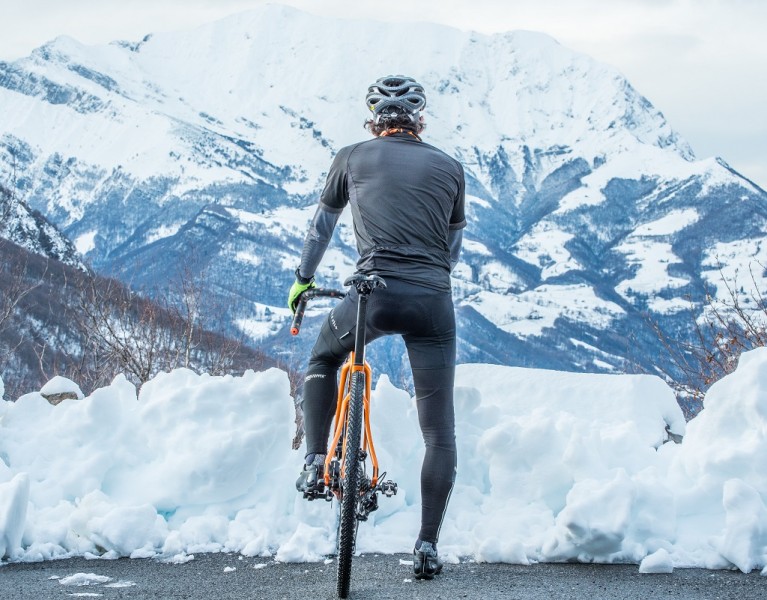
Winter Biking: An In-Depth Guide To Biking In Cold Weather
Table of Contents [Show]
As a long time biker, I have to admit, I was always intimidated by winter biking. I always thought winter bikers had a certain, light-hearted approach to life that went beyond my understanding. Sure, I loved the freedom of a bike in the open country or participating in a race or two, but the truth was, I liked my comfort zone, and never really enjoyed spending time in the cold air.
As soon as the weather started to point towards snow, ice, and holiday celebrations, I would pack up my biking gear and wait until spring to start again. It wasn't until a good friend (someone I always considered to be a risk-taker, at least, compared to me) wore me down through the fall that I finally gave in and agreed to join them on a trip. I swore it would only be once, and they swore I would change my mind after the trip. As you can assume, now I look forward to visiting new locations every winter. I even started riding my bike to work in winter.
If you're on the fence about winter biking, at least do yourself the favor of reading through the wealth of information provided below. That way you'll give yourself a fighting chance at the experience of a lifetime. As my friend aptly said: "All you need is a taste."
How to Prepare Your Bike for Winter?
Winter is hard on bicycles. With ice, snow, and salt, it's not a matter of if the bike will be affected, but how much.
When I first started winter biking, I thought you needed a special kind of bike for this. But my friend quickly corrected my faulty thinking. "There's no such thing as a true 'winter bike.' Among us regular people, it's a bike that you're willing to sacrifice in the long term, for the love of the ride."
While my friend seemed dramatic at the time, after spending at least an hour cleaning every inch of my winter bike to prevent corrosion and damage, I realized something. No matter how much effort I put in, there's no such thing as a 'winter-proof' bike, even if some bike companies advertise as such. There are, however, a few things that can keep your winter bike safe and running smoothly as long as possible.
Lower Tire Pressure
Take some time during the fall to find your perfect tire pressure. This way, you'll increase traction and stability without buying a new set of wide, heavily treaded tires. While it's hard to generalize because everyone has a different bike setup, and different weights, a PSI of around 15 isn't uncommon for winter bikes.
Clean Bike After Every Ride
In other months, especially in areas that aren't as wet, you can get away with going for a quick ride, quickly putting away your bike, and heading to a meeting. In the winter, you must thoroughly clean the bike after every ride.
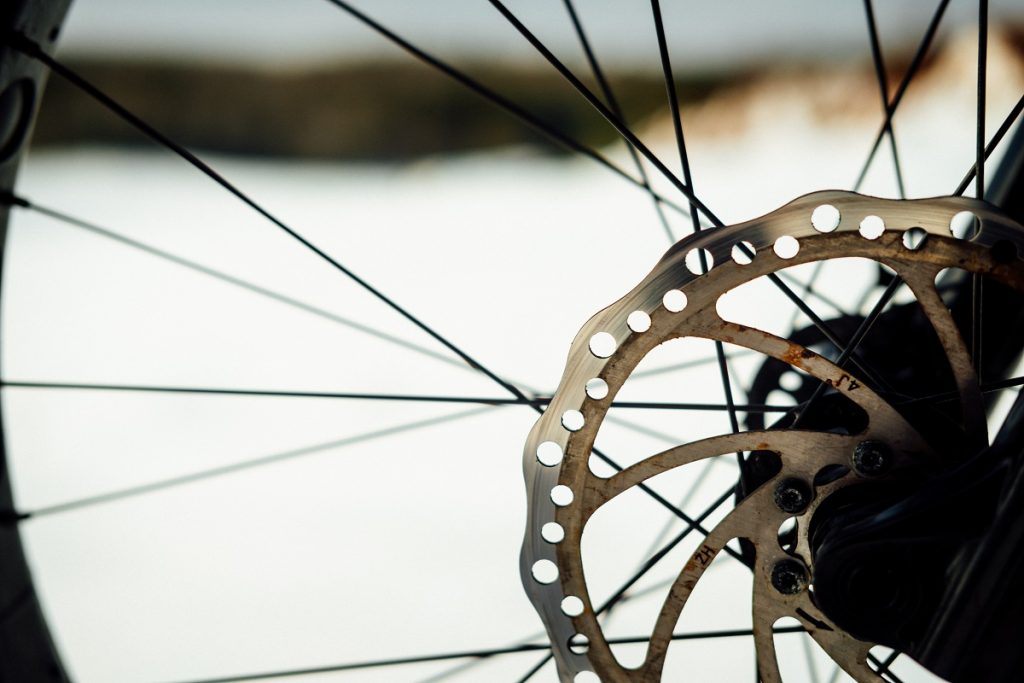
I suggest using a light lube on the chain after a particularly difficult wash. If you're having trouble with keeping a good level of grease when riding, try choosing a stickier lube. Wipe down/replace the grease layer regularly to avoid build-up as well.
Fenders Are A Must
Again, you might not use fenders or mudguards during the rest of the year. In winter weather, it's a must. Not only does it keep your bike in the best condition possible, and keep you warm for whatever trip you have planned, it will also keep your friends high and dry. This is very important if you don't want your friend to decline your next invitation after a particularly wet trip.
Disc Brakes Make Life Easier
Finally, disc brakes are becoming more and more popular for winter-biking enthusiasts. Disk brakes turned out to be more powerful, more reliable, and faster than the regular rim brakes. If you're looking for more information on why disc brakes are becoming a staple, check out this article here.
If you're planning to visit some popular glamping resorts and engage in some mountain biking, you'll need a heavier and more durable bike, such as a winter mountain bike or fat bike.
What is Winter Mountain Biking?
Starting with the basics, mountain biking during the winter months (roughly December through March) is considered winter mountain biking.
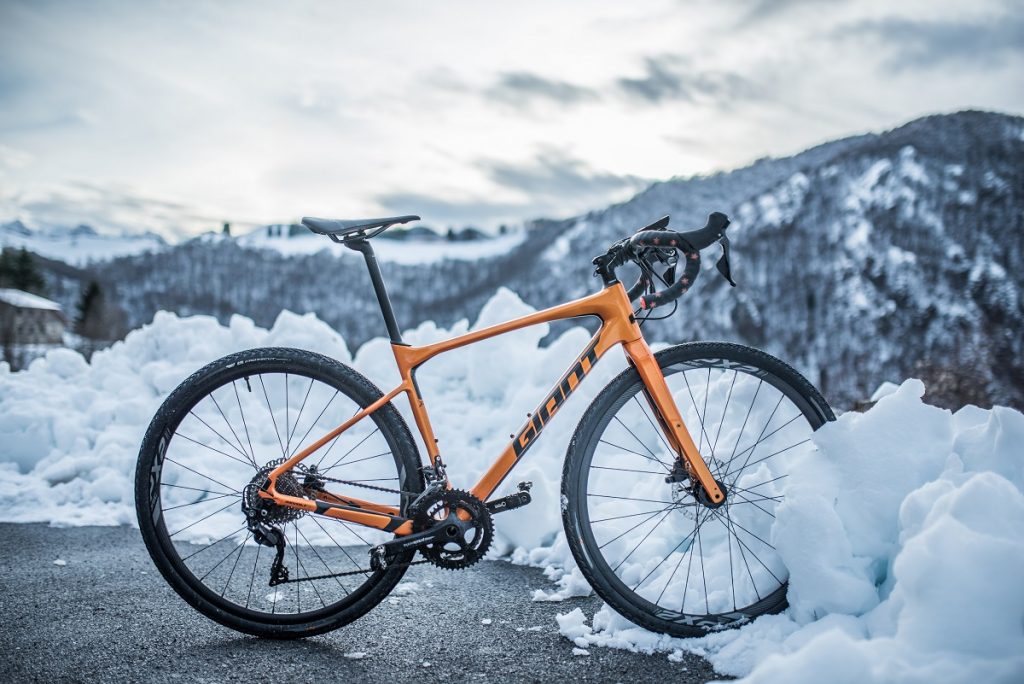
Biking on the wet, muddy, snowy trail requires a different approach and different speed than riding in non-winter circumstances. Expect slippery and soggy terrain with hidden rocks, and keep in mind you're probably going to go slower than you're used to.
For mountain biking in the winter, I chose an older mountain bike I've had in my garage for far too long. I replaced the brakes and added a fender. While this may not work for everyone's needs, most of my winter biking trips are in Winter Park Colorado. For that purpose, I find this set up more than enough. If you're planning on riding in deeper snow, or slick roads, try a heavier fat bike.
What is Winter Fat Tire Biking?
If you have any familiarity with winter biking, fat biking is probably the picture you have in your mind. Back in the days, I made a plan to purchase one of these to start traveling with my friend. I changed my mind when they suggested that I should save money until I actually need one.
My previous tips still stand: low, low tire pressure, thorough cleaning, fenders, disc brakes. But, truthfully, fat bikes can take you places that an old mountain bike cannot.
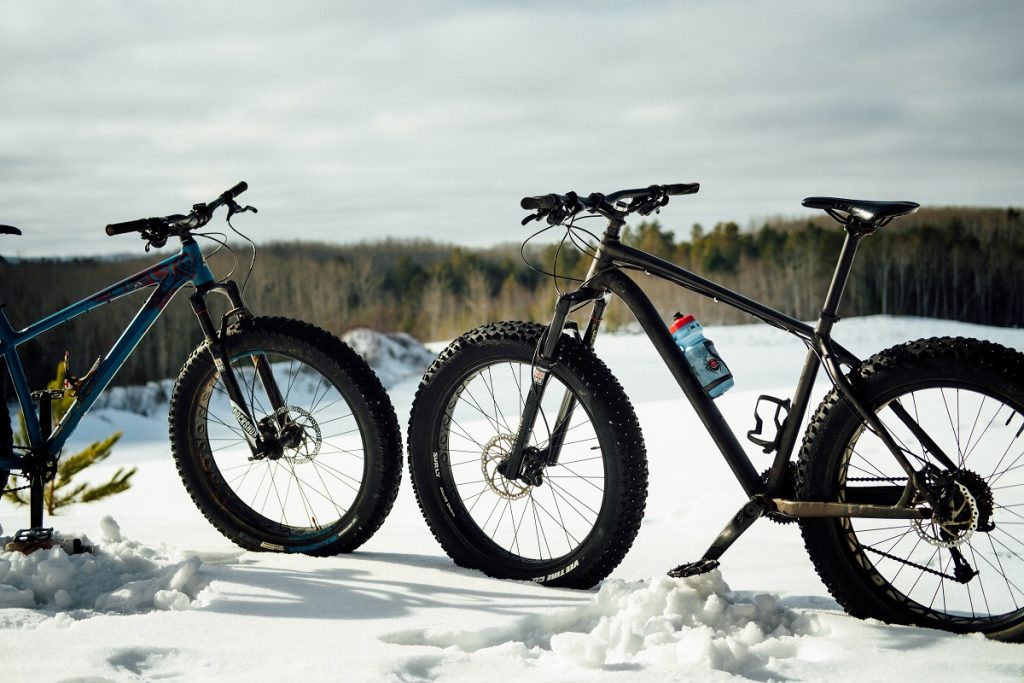
The wide, heavy-duty tires are perfect for bikers who do a lot of winter biking in areas where snow hasn't been cleared away. In fact, they became so popular that there are fat-bike championships that happen during the winter!
However, if you haven't been biking for very long, it's important to know that fat bikes are heavy. Over the snow, it might feel like you're floating. However, on a normal road, it's like you're biking in molasses. Reusing an old mountain bike for winter rides is a bit more versatile. So, unless you're doing a lot of off-the-beaten-path riding, a fat tire bike might not be a good fit for you.
Tips And Tricks on Winter Biking
Now that we've covered the basics of biking in the snow, let's talk about the most important things I've learned. If you're preparing for a winter biking experience, here are a few tips and tricks to go over before you head out into the cold.
Use The Outdoor Gear You Already Have
Reusing gear is a great way to save money. If you have other outdoor hobbies like skiing or mountain-climbing, you don't need to buy biking-specific gear. Borrow the gloves, goggles, and face warmers from your other hobbies, so you can put the money towards something else. Probably buying more gear for one of your other hobbies.
Keep Your Water From Freezing
Water or other drinks will need to be well-insulated to avoid freezing. The last thing you want is to stop for a drink break and have to chip away at your drink to hydrate yourself. And trust me, you will get thirsty.
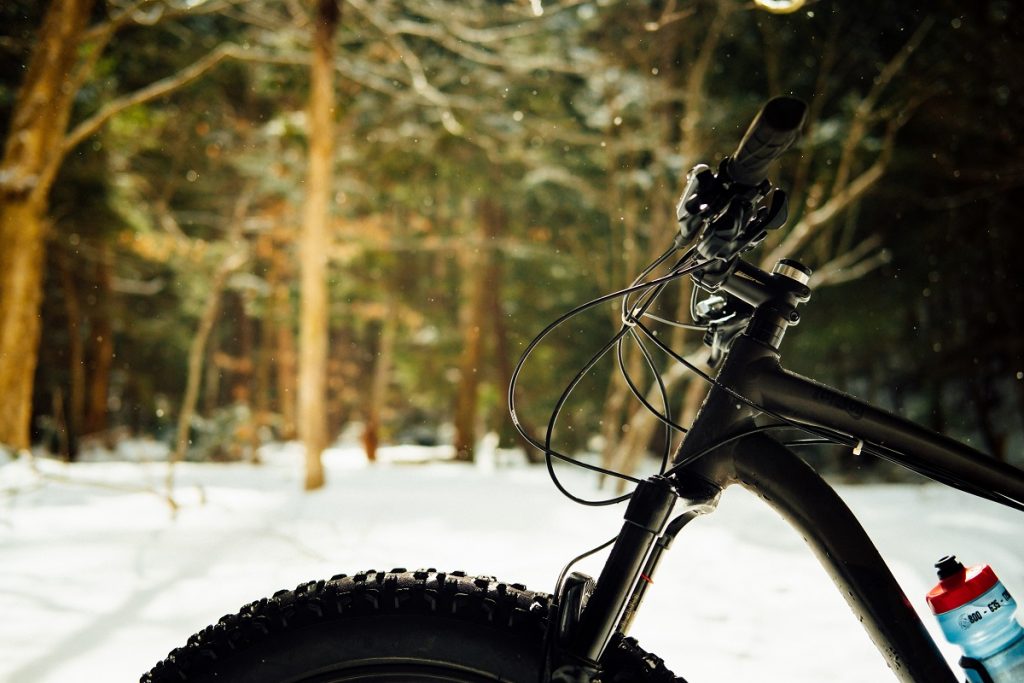
Test The Lights For Winter Weather
Proper lights can be more complicated in the winter. Be sure to test out your normal reflectors in winter weather (fog, darker days, etc), and purchase additional lights if necessary. Safety should come before everything else.
Keep Your Hands and Feet Warm
Due to a lack of movement and flexing in the hands and feet, these parts can easily wind up frozen and in pain.
If you don't have winter cycling gloves, disposable hand warmers are great to bring with you. They're especially important for long trips that are far away from the city and can save you from many post-adventure complications.
It's the same with the feet. Avoid cotton socks and try wicking, wool blends. After a few trips with my friend, I got overconfident and wore a different pair of socks on a Sunday morning bike. Luckily, my friend brought one of these toe warmers. It saved me from having to call another friend for a pick-up.
What To Wear For Winter Biking?
Before you go out pedaling, make sure you're dressed for the occasion. Winter biking beginners often forget that they'll be sweating in the cold weather, so it's essential to know how to dress for the occasion. We've already covered (pardon the pun) hands and feet, so let's have a look at the winter biking clothing essentials: dress like an onion, and wear a hat!
Wear Layers
It's hard to predict what you'll need, and how warm you'll get. One of the greatest benefits of winter biking is how quickly you burn calories. However, your body will be doing twice the work - keeping you warm and keeping you moving. It's a good idea to dress with several layers and to have a small backpack to roll unwanted layers and store them.
Base Layer
Having a comfortable base layer that preserves body heat and wicks away the sweat, while being odor-resistant is the key to a successful winter biking adventure. Merino wool base layers offer just that!
Pants
A comfortable pair of pants with a gusseted crotch and articulated knees should keep you warm and let you move freely. Also, if you have a carbon fiber seat for your bike, you'll need strong pants like Renegade™ Rock Pant - durable and lightweight pant with a water-resistant finish that helps with repelling snow droplets. The Klash™ Pant (or W's Klash™ Pant) is also an excellent option here because of the flexibility, materials, and water-resistant finish.
Mid Layer
Wearing a mid layer comes down to personal preference. Some people generate enough heat through movement so having a base layer and a jacket does the job. Others, however, prefer to be snug with a top like Alloy™ that is wicking and breathable, or Skar™ Crew.
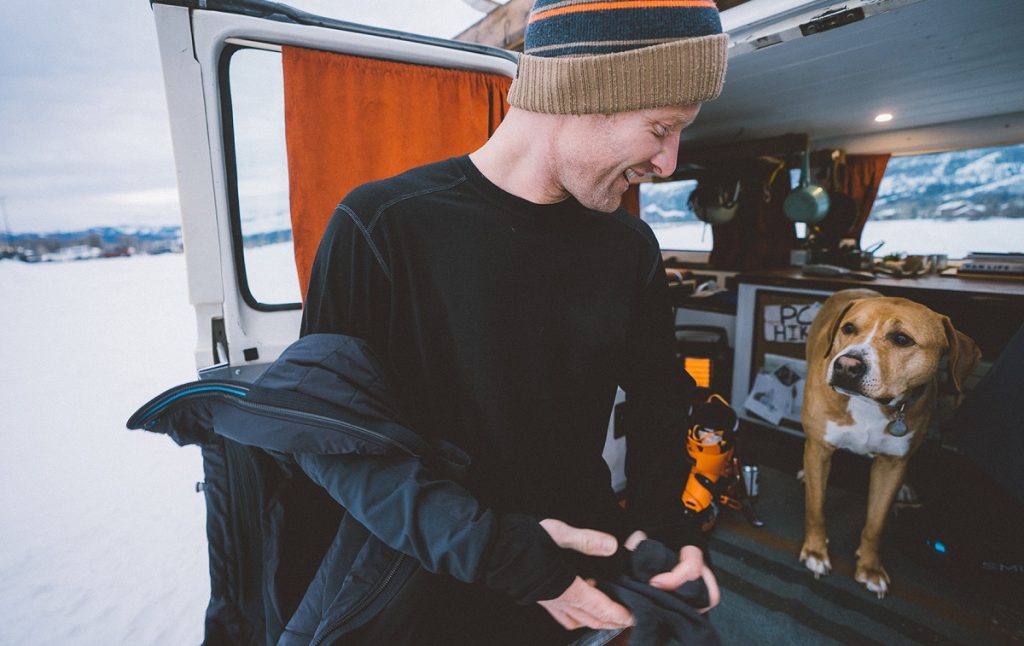
Outer Layer
Depending on your mid-layer, you can choose a soft shell jacket or even an insulated hybrid jacket like Wildkard™ Hybrid Jacket. The latter features strategically placed insulation for maximum warmth and movement, and minimum bulk. A highly technical jacket like Deflektr™ Hybrid Shell performs best in higher intensity outdoor activities such as winter biking.
A Hat
Head and neck are the spots where we lose a big portion of our body heat. That's why we shouldn't forget to keep them insulate, especially when biking in the cold season. You can use your jacket's collar and hood, or get a neck gaiter and a warm hat.
Favorite Biking Spots
Finally, here are a list of my favorite winter biking destinations. I've included a couple that are on my list to check out in the next few months, but I've already checked out most of these places.
Winter Park Colorado
Fraser River Bike Trail
This is my go-to spot for winter biking. Not only is it conveniently close to me, it's a beautiful, casual ride, and truthfully, I'm not always looking for an intense workout.
South Fork Loop
This is another one of my regular routes, especially when I'm dragging along a friend with less experience than me. I'll say this about most of these spots, but the views are fantastic.
Jones-Pass to Herman Gulch
This trail is far above the treeline, and has great views of the mountains. It is absolutely a difficult trail, but not particularly strenuous. The trail was designed more for hiking, so there are some moments when you have to navigate rocks and push your bike.
Rainmaker
I had to make this my final Winter Park suggestion, it's just so fun! So many jumps, and creative look-out points. Even though I've done it quite a few times, it never disappoints.
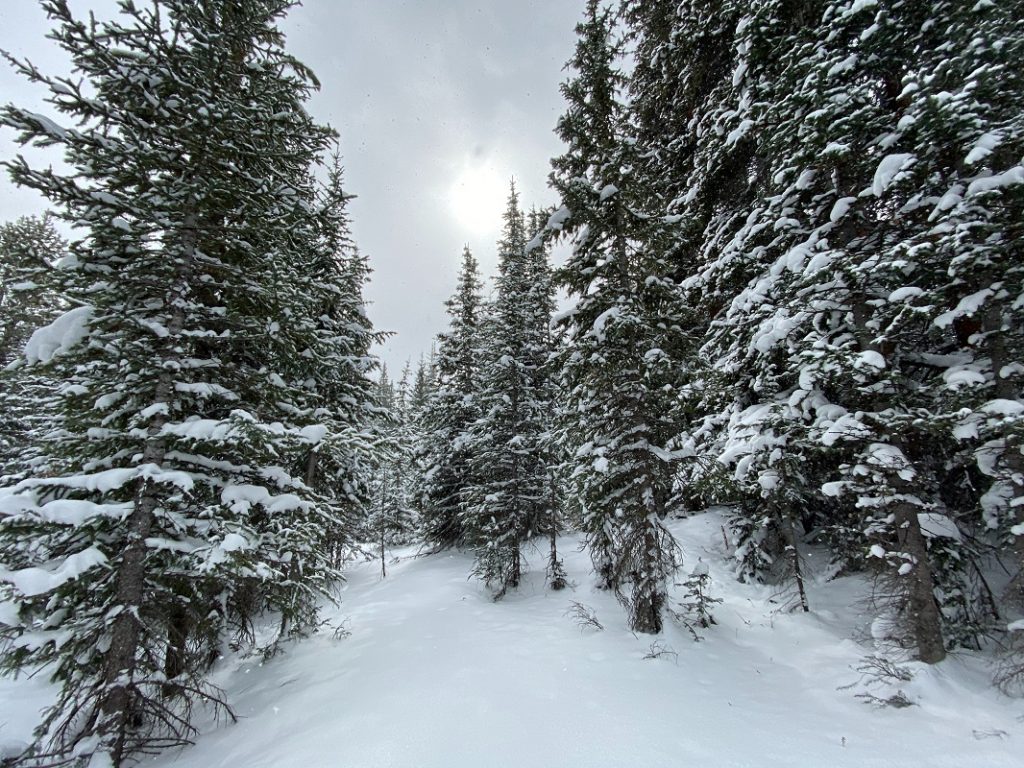
Leadville, Colorado
Home to the famous Leadville 100 Mountain Bike Race, America's highest elevation city has an abundance of trails perfect for winter biking.
Colorado Mountain College Trails (Timberline Trail System)
Seven miles of single track trails are accessible from the Colorado Mountain College campus with an additional seven to ten miles of wider groomed Nordic trails. The mellow terrain is good for all ages and abilities; it's also excellent for trail running.
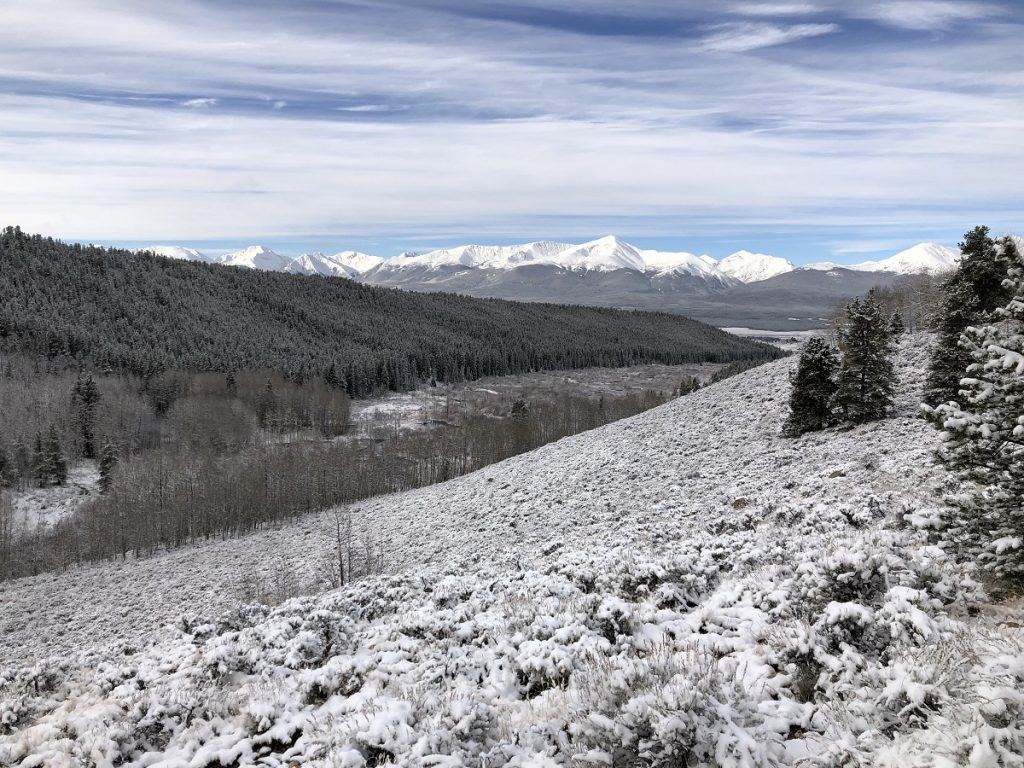
Mineral Belt Trail
The Mineral Belt Trail has been listed as one of Colorado’s top 10 mountain trails. The 11.6 mile loop travels through the historic mining district and follows old mining-camp rail beds.
Tennessee Pass Nordic Trail
At the Tennessee Pass Nordic Center, adventurers have the choice of winter biking or nordic skiing. For more details on winter activities around Leadville, check out Fat Biking Leadville with Alp Cycles Women’s Racing Team.
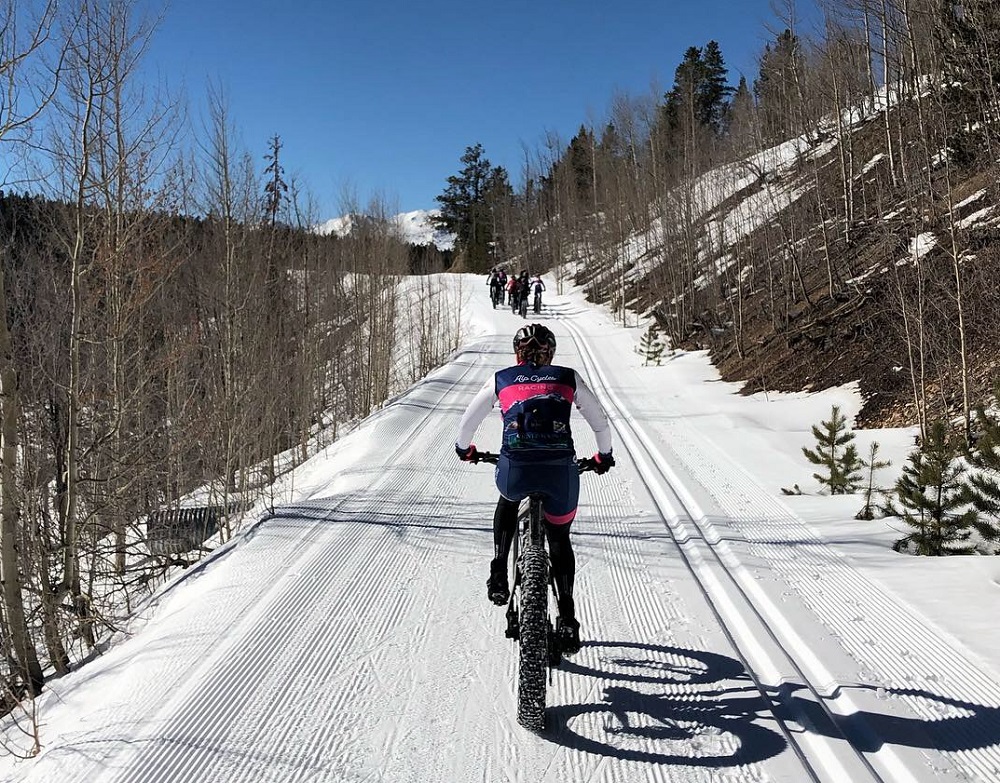
The Full Lemmon Drop - Tuscon, Arizona
Moving into other states, this trip is one of my favorites. Dramatic changes in elevation and in environment, this spot needs to be on your list.
The Great Eight Loop - Brevard, North Carolina
If you find yourself enjoying what the Appalachians have to offer, this whole area has an endless supply of great trails. This trail has suspension bridges and a great sampling of North Carolina nature.
Malaga, Spain
La Ermita
Of course, I couldn't leave international destinations off of this list. It would simply be disrespectful not to include La Ermita on this list.
La Techa
This trail literally feels like entering a whole new world. I nearly missed it on my first trip, but now I can't wait to try it out in the winter-time.
New Zealand
West Coast Wilderness Trail
These next few are all locations I haven't been yet. In fact, I've pulled every one of them from my very detailed plan for next winter. This trail in particular has beaches, rainforest, and snowcap mountains, so clearly it's a top priority.
Queenstown Trail
This trail in particular has a huge reputation. It's a several day trip, with stops in beautiful, small towns along the way. This trail will be taking up quite a bit of my time next year!
The Redwoods
Most bikers I know have heard of this spot. It's practically the Mecca of bikers all over the world. This area is huge, so I had to narrow it down a lot when planning.
I have to admit, this is the trail I am most excited about. Truthfully, none of the views I've mentioned above can truly compare to what this trail has to offer. It's a unique, life-changing experience, or so I've been told. I look forward to finding out for myself.
If Not Now, When?
If you've made it this far, I'm sure you've been convinced. Once you go winter biking, you'll see that is actually a fantastic experience when you've done all you can to adequately prepare. Hey, riding a bike through the snow? All that's left to do is to get out and have fun.
Featured Image - Photo by asoggetti.


